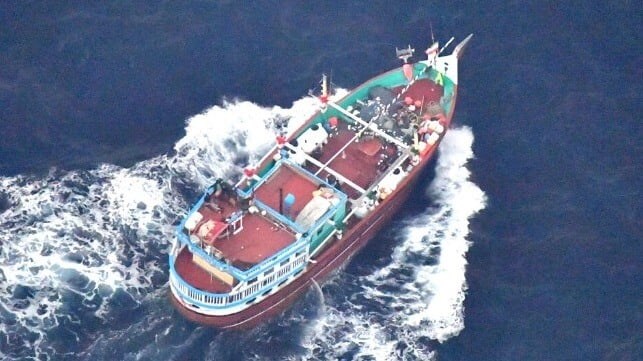
Thursday February 1, 2024

The hijacked fishing dhow Al Meraj-1 (Indian Navy)
Maritime security analysts are concerned that the disruption in the Red Sea and Gulf of Aden may be creating new opportunities for Somali pirates, who had been quasi-dormant since 2012 but have recently picked up the pace.
EUNAVFOR assesses that there are at least two pirate action groups now operating in the Eastern Indian Ocean, and they may be equipped with mother ships (hijacked dhows) to increase their range. This aligns with a substantial uptick in pirate activity: Neptune P2P, a piracy consultancy, counts 16 incidents (of varying severity) since late November.
advertisements
The first sign of trouble came on Nov. 22, when Somali pirates hijacked the Iranian fishing vessel Al Miraj 1 off the coast of Puntland. Neptune's local sources reported that the vessel had been stolen by a local gang for duty as a pirate mothership. This working method was used often during the peak years of Somali piracy.On January 4, suspected Somali pirates boarded and attempted to hijack the bulker Lila Norfolk off Eyl, Somalia. The attack was unsuccessful and the assailants fled.
Multiple smaller fishing vessels have been hijacked over the course of the month (seven more, by Neptune's count); at least three have been rescued by the Indian Navy.
At the same time that pirate action groups have been gearing up again, the foreign naval forces that have protected shipping against Somali piracy have had a portion of their capacity diverted to deal with Yemen's Houthi rebels, who have repeatedly attacked shipping in the Red Sea and Gulf of Aden. It is likely that Somali criminals see a window of opportunity for piracy now that the Houthis are creating a distraction, according to Neptune.
At the same time, the Houthis' attacks have made the Red Sea less attractive, and have forced hundreds more ships to take the route around the Cape of Good Hope. Depending on the point of departure, the route around the Cape can include a transit through waters nearer to Somalia. "This presents a significant increase in the number of ‘targets’ for pirates to exploit, especially vessels transiting to and from the Persian Gulf," assessed Neptune P2P.
Dr. Ian Ralby, of maritime security consultancy IR Consilium, agrees that the ship diversions also come with a risk of exposure to Somali piracy - and that the pirate action groups have been keeping ready.
"[Somali] skills for piracy were not lost over the last decade, they were transferred. A lot of the attacks by Somali pirates were against vessels that were engaged in illicit trafficking. The reporting just hasn't been there," he said in testimony in Congress this week.